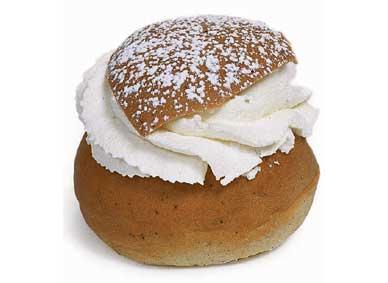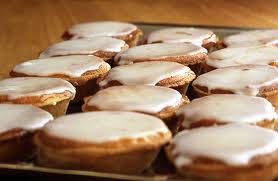February 20, 2023
My Swedish favourite Fika.
Fika!. The very Swedish special word that I will hear once you arrive sweden. Fika is a very well known term in sweden.It is similar to the British afternoon tea tradition, in which people gather and socialize over a cup of hot beverage and some small snacks. Fika is very popular in the work environment, university clubs or when people want to socialize and have a cup of caffe. The difference is that Swedes can have fika multiple times throughout the day. In fact, they have a legal right to regular fika breaks at work.Swedes prefer coffee to tea and, unlike the three-tiered serving tray loaded with a few different types of morsels that is common in the UK, they only have a small bite – a bun, a slice of cake, or a cookie. However, when it comes to traditional fika treats, the selection appears to be limitless.
For me, as a sugar lover, Swedish coffee shops were my heaven on earth. I even have this to-do in my bucket list to try all the Swedish fikas. Here are some of the best Fikas I have tried till now.
1. Semla buns (Semla or Fastlagsbulle)
A small wheat flour bun flavored with cardamom and filled with almond paste and whipped cream, has become a carb-loaded Swedish icon called semla.It is considered as traditional lent buns as its traditions stem from fettisdag (Shrove Tuesday, or Fat Tuesday), when the buns were consumed as part of a final celebratory feast before the Christian fasting period of Lent. However, Swedes enjoy them so much that they make them from New Year’s until Easter. Originally, a semla was just a bun soaked in hot milk (known as hetvägg). But the version we have nowadays has the top of a soft cardamom spiced bun cut off, and the bun is filled with marzipan paste and whipped cream before the lid is replaced. Also, you can get variations of Semla that combine almond paste and whipped cream.

2. Raspberry caves (Hallongrotta)
The second favorite Fika for me is Hallongrotta or the raspberry cave in Swedish. The first consumption of these crumbly cookies is thought to have occurred during Fika gatherings in the 1800s. It is both a buttery cookie and a dent (or cave) filled with fragrant raspberry jam. Hallongrottas are delectable treats if the jam is homemade and the pastries are not overbaked in the oven to the point where the jam hardens into a hard lump.Other types of cookies similar to hallongrotta are also available. The Danish have a similar pastry, which is known as thumbprint cookies in the United States due to the indentation made by the thumb on top of the cookie.

3. Vanilla hearts (Vaniljhjärta)
These traditional Swedish heart-shaped pastries are both adorable and delicious. Tender, buttery pastry dough surrounds rich vanilla pastry cream to create simple and delicious individual tarts that will have you wanting more!. If you are a person who considers backing as a therapy habit thing to do then you will enjoy backing Vaniljhjärta.it is a bit of a project, but it is well worth the effort. You will be rewarded with a batch of delectable tarts as well as oohs and aahs from everyone with whom you choose to share them. Because the pastry shell is very thin and fragile, they break apart easily and are not suitable for take-away, so sit down and enjoy one in a bakery or as a weekend activity to do. Vanilla hearts simply melt in your mouth and make excellent coffee companions.

4. Mazarins
The mazarin tartlet, also known as mazariner in plural, is a popular Swedish tartlet. It has a base of sweet vanilla-flavored shortbread dough and an almond cream filling. These Swedish Almond Tarts are possibly 400-year-old cousins and variations of the Italian crosata di mandorle or torta di mandorle. Their etymology reflects their heritage, as they are named after the Italian-French cardinal and politician Giulio Raimondo Mazzarino, also known as Jules Mazarin (1602-1661). He was raised in Rome after being born in southern Italy. Cardinal Mazarin was a food lover who, along with Anne of Austria (Queen of France, 1615), with whom he had good relations, was one of the few Italians who widely promoted pasta throughout France. It’s not surprising that these almond tarts bearing his name made their way across Europe, given that Cardinal Jules was Chief Minister of France at the time, with numerous foreign relations. Mazarin is similar to French friand in its oblong shape, moist texture, and almond flavor. Mazarin has a thin crust on the outside and a ground almond filling on the inside, whereas friand is baked without an outer crust and is much taller. Mazarins can be plain, with white icing or crystal sugar sprinkled on top.





